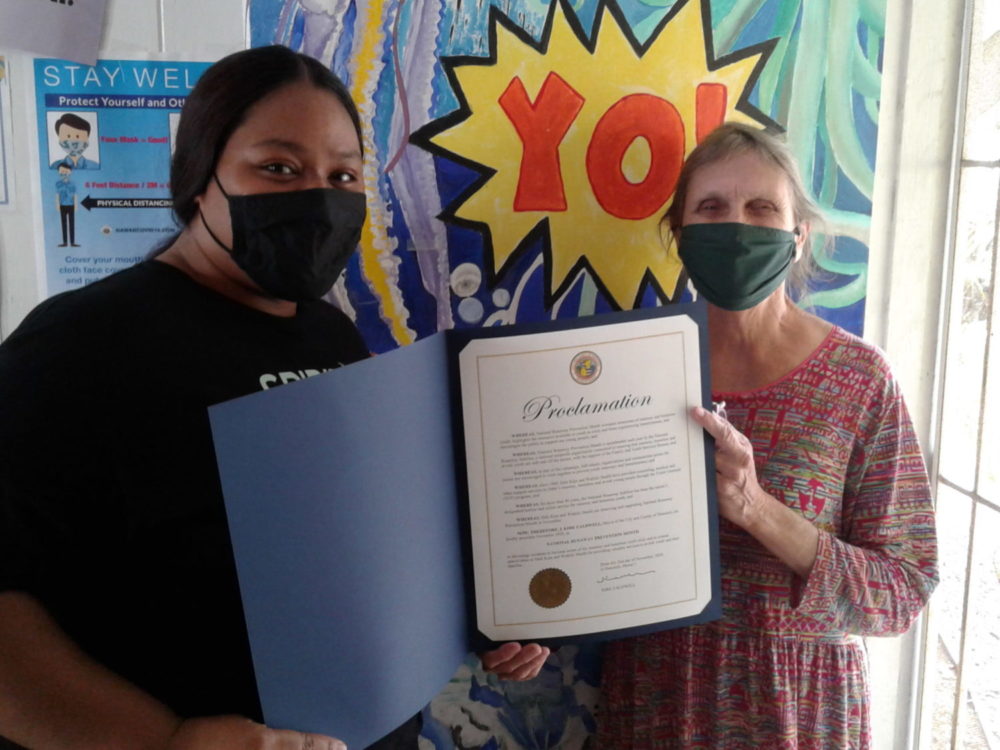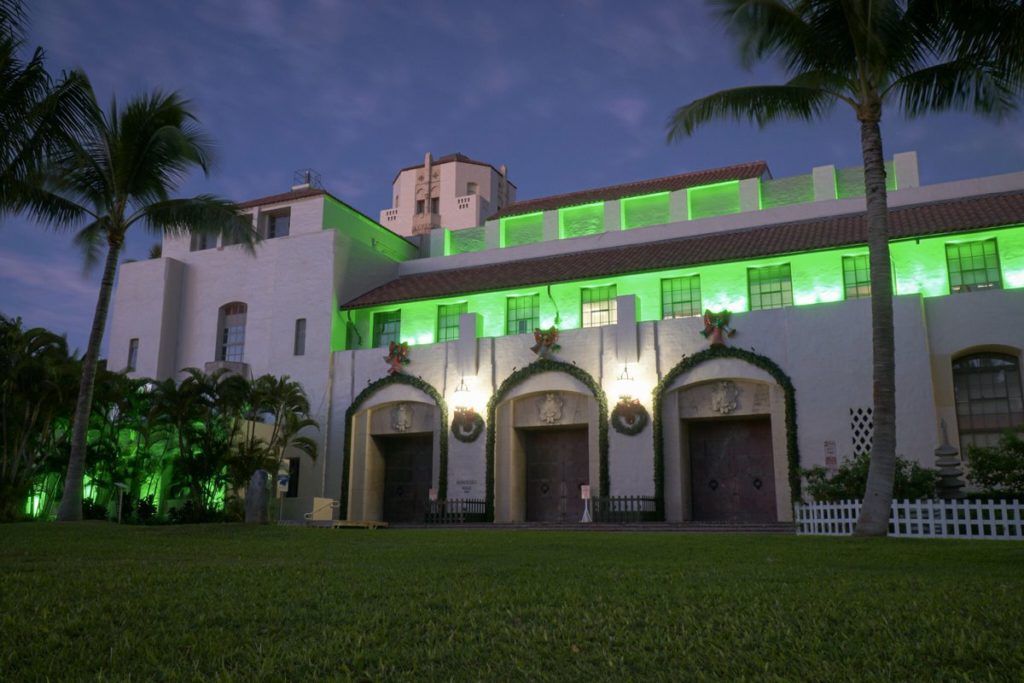
Earlier this month, a luminous Honolulu Hale, awash in green light, ushered in this year’s National Prevention Month (NRPM) here on Oahu.
Too often, the estimated 4.2 million people ages 13-25 (or a staggering 1 in 10 youth ages 18-25 and 1 in 30 youth between the ages of 13 and 17) who endure some form of homelessness every year in the United States remain hidden in the shadows, invisible to most of us.
The National Runaway Safeline (NRS), a top resource for the nation’s runaway youth and their families, created the NRPM in 2002 to “Shine a Light” on homeless teens, young adults, and their families.
The greenlights at Honolulu Hale are a result of a partnership between Hale Kipa and the City & County of Honolulu to observe NRPM. The Mayor’s office also issued a proclamation in support of NRPM. In recognition of NRPM, NRS encourages municipalities and organizations across the country to display green lights as symbols of hope.

The mission of the National Runaway Safeline (NRS) is to keep America’s runaway, homeless and at-risk teens and young adults safe and off the streets. Hale Kipa provides the same services on a local level through its work with Waikiki Health. Together, the two organizations provide counseling and other support services to Oahu’s homeless at-risk young people through the Youth Outreach (YO!) program in Waikiki. Throughout NRPM, Hale Kipa highlights these services and endeavors to increase awareness of homeless and runaway youth.
Here in Hawaii, Hawaiian, part Hawaiian and Micronesian youth are particularly at risk for homelessness. In a survey of 151 homeless or unaccompanied youth aged 12-24 conducted by Hale Kipa and Waikiki Health, almost half were Hawaiian or part Hawaiian and staff at YO! and Ho’okala have seen an increase of particularly Chukeese youth runaways.
There are many risk factors that increase a young person’s odds of experiencing homelessness:
- Homeless and runaway teens and young people are more likely to have come from broken homes where they experienced verbal, physical or sexual abuse before the age of 18.
- Youth from vulnerable communities, including Native American, Hispanic, African American, LGBTQ+ and youth with disabilities are at higher risk of running away and becoming homeless.
- Studies estimate between 19% and 36% of youth experience homelessness shortly after aging out of the foster care system.
The consequences are devastating.
- Approximately 10% of runaway and homeless children report having participated in survival sex, the exchange of sex for shelter, food, drugs or other subsistence needs.
- Experiencing homelessness increases a young person’s likelihood of dropping out of school by almost 87%.
- Runaway and homeless youth are more likely to be involved in the juvenile justice system.
To support NRPM by helping to “Shine a Light,” add a frame to your Facebook profile picture. Go to https://www.facebook.com/profilepicframes and type “National Runaway Prevention Month” into the search bar. Choose the “Shine a Light” frame for the month of November.



